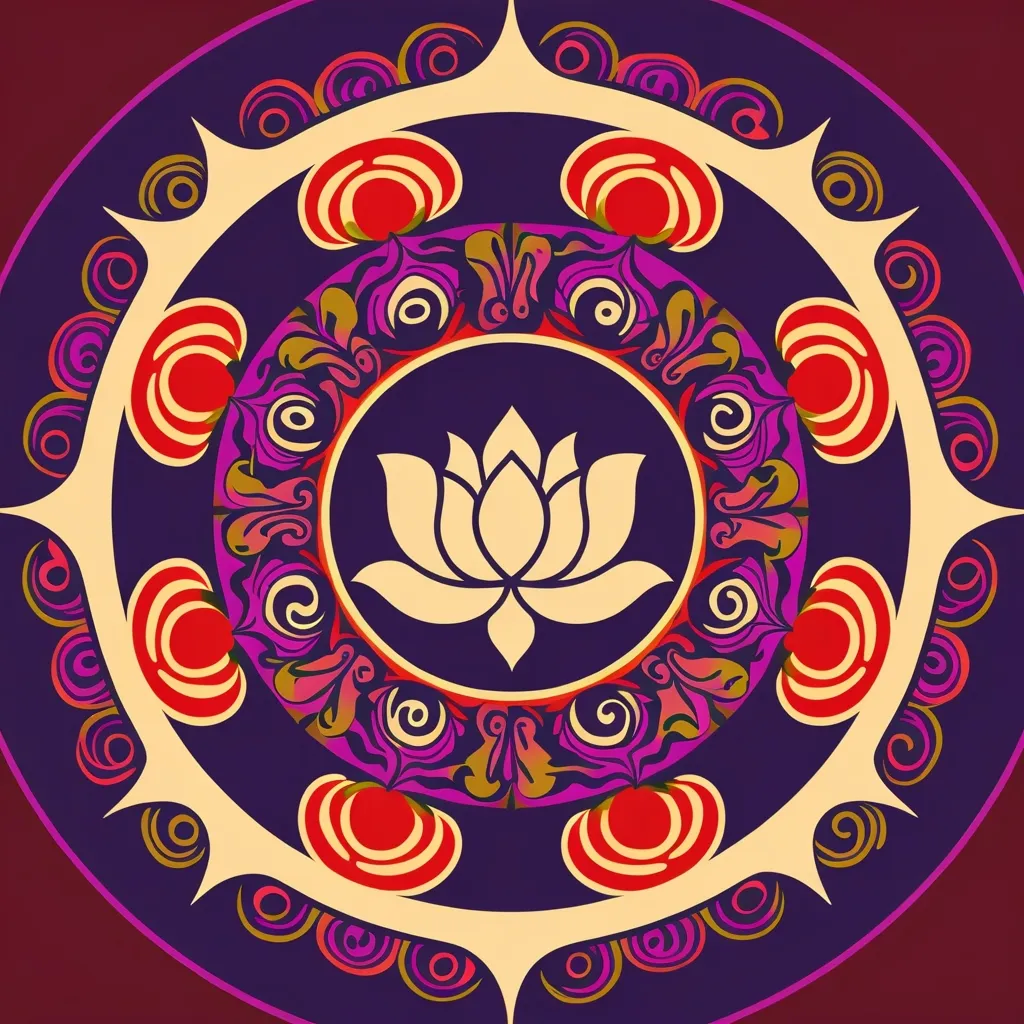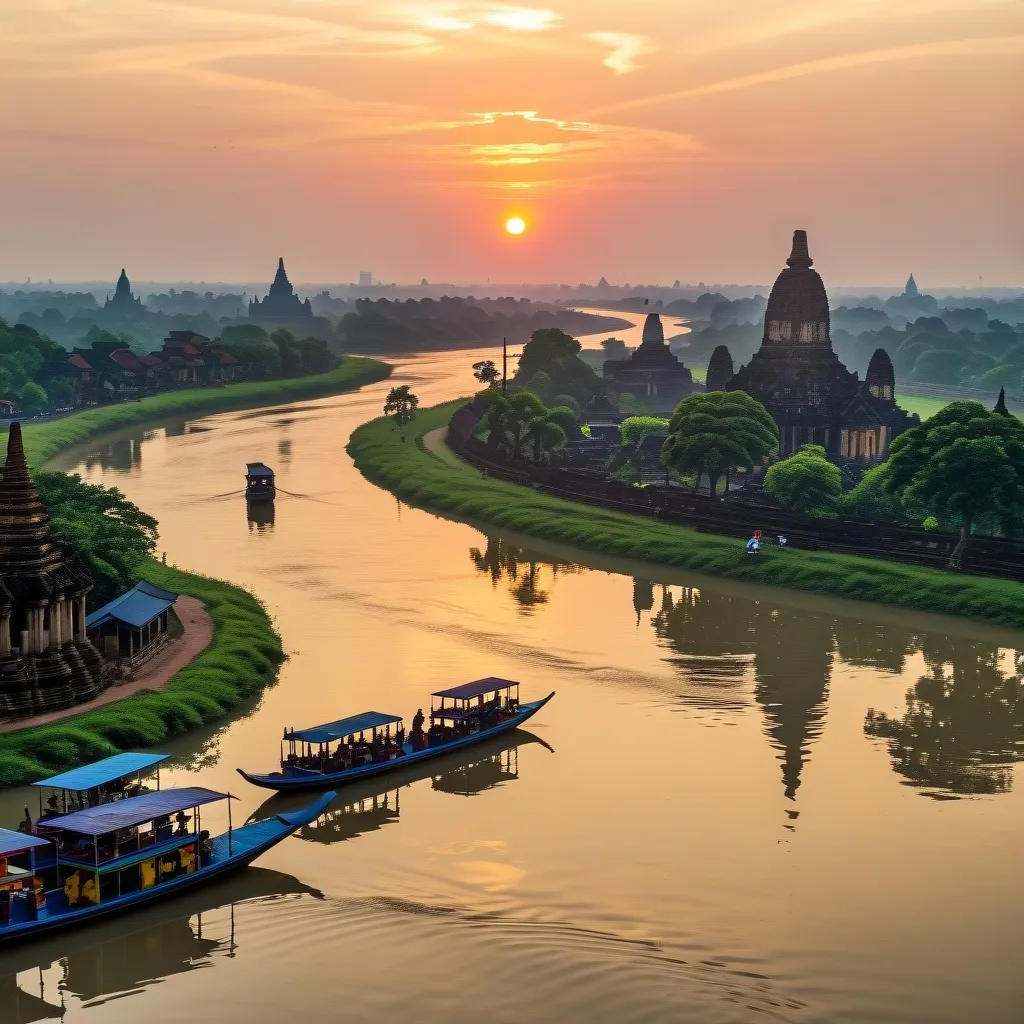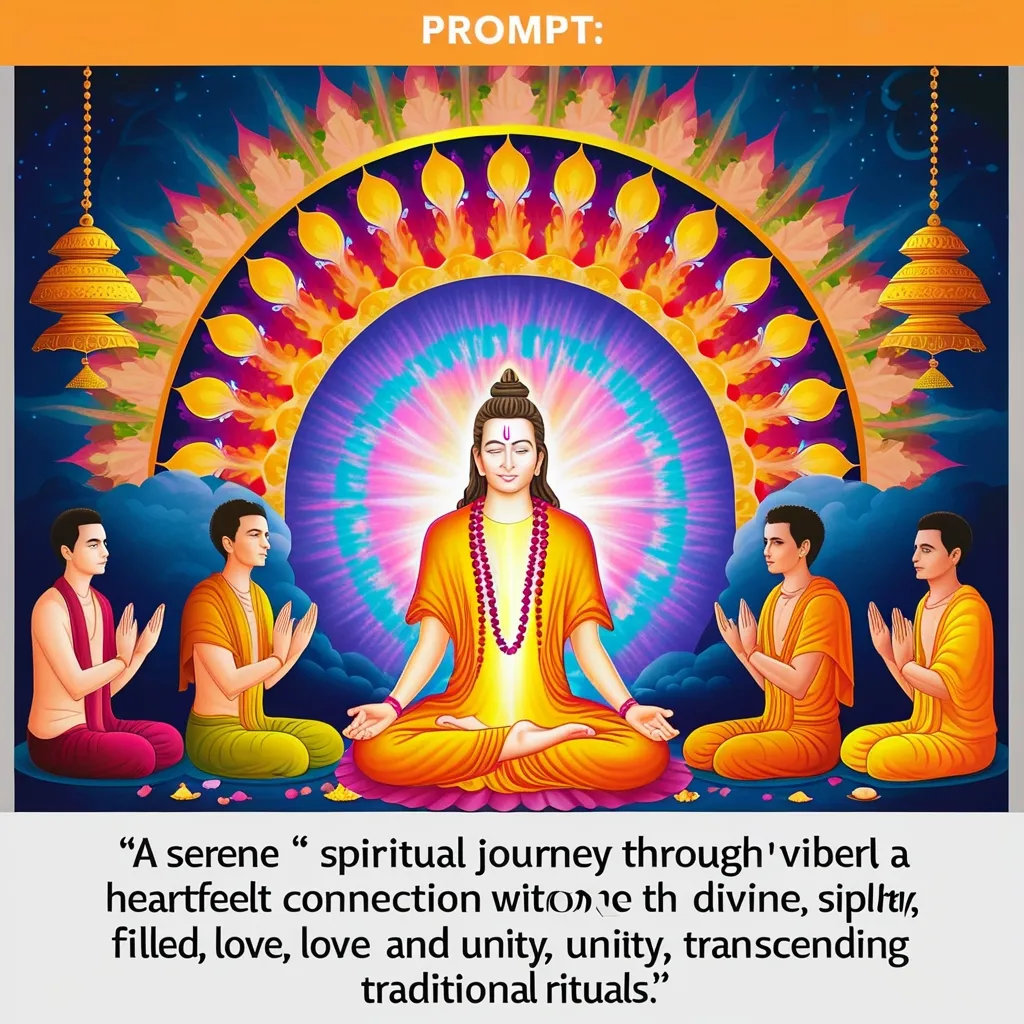As we delve into the intricate and profound philosophy of Advaita Vedanta, we encounter a concept that stands out for its nuanced and thought-provoking nature: Vivarta. This principle, often translated as “apparent transformation” or “superimposition,” offers a unique lens through which to understand the relationship between the ultimate reality, Brahman, and the manifest world.
At the heart of Vivarta lies the idea that the world we experience is not a real transformation of Brahman, but rather an illusory manifestation. This concept is beautifully illustrated through the analogy of a rope and a snake. In the dim light of twilight, a rope can be mistaken for a snake, but once the true nature of the rope is realized, the illusion of the snake disappears. Similarly, the world and our bodies are seen as superimpositions on Brahman, the Supreme Self. This realization is crucial because it underscores that Brahman itself does not undergo any change; it remains immutable and eternal.
The theory of Vivarta is distinct from other philosophical views, such as Parinamavada, which posits that the world is a real transformation of Brahman. In contrast, Vivarta suggests that the world is merely an apparent or illusory manifestation. This distinction is vital because it addresses the paradox of how an unchanging, ultimate reality can give rise to a dynamic and ever-changing universe.
Brahman, in Advaita Vedanta, is the fundamental reality that underlies all existence. It is described as pure existence, pure consciousness, and pure bliss. However, due to the interplay of Maya (Brahman’s inscrutable power) and Avidya (ignorance), this ultimate reality appears to take on various forms and names. Maya has two primary powers: Aavaranshakti, which veils the true nature of Brahman, and Vikshepshakti, which projects the separate world we experience.
The concept of Vivarta is closely tied to the idea of Mithya, or error in judgment. According to Advaita Vedanta, our everyday experience is filled with such errors, where we mistake the illusory world for the real. This error is rooted in our ignorance of the true nature of Brahman. When this ignorance is dispelled through knowledge, the illusory world loses its hold, and we realize our true, pristine, divine nature.
One of the key aspects of Vivarta is its explanation of the relationship between the individual self (Jiva) and the universal self (Brahman). In this philosophy, the Jiva is not different from Brahman; it is merely a manifestation of Brahman under the influence of Maya. This understanding is encapsulated in the verse “Brahma satyam jagan mithya; jivo brahmaiva na aparah,” which means “Brahman is alone True, and this world of plurality is an error; the individual self is not different from Brahman.”
The role of Vivarta in Advaita Vedanta is not just theoretical; it has practical implications for our spiritual journey. By recognizing the illusory nature of the world, we can begin to see through the veil of ignorance and move towards self-realization. This realization is not about denying the world’s existence but about understanding its true nature. When we grasp that the world is an apparent transformation of Brahman, we are no longer bound by the phenomena and names and forms that make up our everyday experience.
Vivarta also contrasts with other Vedantic schools, such as Shuddhadvaita, which posits that Maya is a real power of Brahman and that the world is a real manifestation of Brahman’s will. In contrast, Vivarta sees the world as an illusory manifestation, emphasizing that Brahman itself does not change.
The historical development of Vivarta is another fascinating aspect. While Adi Shankara is often associated with Advaita Vedanta, the concept of Vivarta was further refined by post-Shankara Advaitins. Scholars debate whether Shankara himself advocated Vivarta or if it was a later development within the Advaita tradition. Regardless, the concept has become a cornerstone of Advaitic thought, offering a nuanced understanding of the cosmos.
In our daily lives, the concept of Vivarta can serve as a powerful tool for discernment. By recognizing that much of what we experience is illusory, we can cultivate a detachment from the ephemeral and focus on the eternal. This does not mean rejecting the world but rather seeing it for what it truly is—an apparent transformation of the ultimate reality.
As we journey through the complexities of Vivarta, we find that it not only deepens our understanding of Advaita Vedanta but also offers practical wisdom. It challenges us to question our perceptions and to seek the truth beyond the illusions that surround us. In this quest for cosmic understanding, Vivarta stands as a cosmic catalyst, guiding us towards a profound realization of the true nature of reality and our place within it.
Ultimately, the concept of Vivarta invites us to reflect on the nature of consciousness and the origin of the world. It prompts us to consider how an unchanging reality can give rise to a dynamic universe and how we can reconcile this paradox. Through this reflection, we may find that our understanding of existence is transformed, and we gain a fresh perspective on the intricate dance between the ultimate reality and the manifest world.
In the end, Vivarta is more than just a philosophical concept; it is a pathway to self-realization and a deeper understanding of the cosmos. As we explore this principle, we are reminded that the truth lies not in the apparent but in the real, and that realizing this truth is the key to liberation from the cycle of transmigration and worldly bondage.






